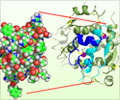New study has discovered how glucagon maintains metabolic balance between the production and use of energy in the liver.

‘New study has provided fresh insights into glucagon biology and suggested that mitochondrial calcium transport, mediated by INSP3R1, may represent a novel target for therapies that aim to reverse NAFLD and type 2 diabetes. ’





Now a Yale team led by senior author Gerald Shulman and first author Rachel Perry, both endocrinologists, report that they have discovered how glucagon maintains metabolic balance between the production and use of energy in the liver. "By applying novel methods to assess liver metabolism we were able to delineate the molecular mechanisms by which glucagon works," said Shulman, who is the George R. Cowgill Professor of Medicine and professor of cellular and molecular physiology.
Perry is assistant professor of cellular & molecular physiology and medicine.
Researchers have previously focused on glucagon in attempts to reduce elevated blood sugar in diabetes. But those experimental treatments led to potentially serious side effects, including buildup of liver enzymes indicating fatty liver disease.
The new research zeroed in on the role of calcium signaling within the mitochondria, the cell's energy-producing factory.
Advertisement
"We identified mitochondrial calcium transport as a potential target to promote the good effects of glucagon to promote mitochondrial fat oxidation in the liver and reverse NAFLD without the bad effects of stimulating gluconeogenesis," Perry said.
Advertisement
Source-Eurekalert










